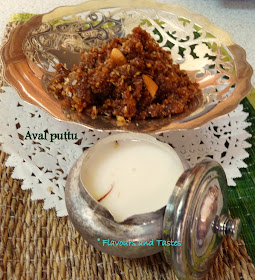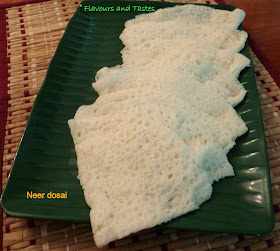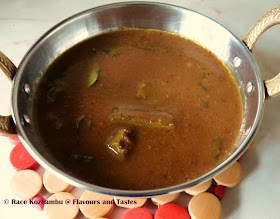I had seen the Udipi sambhar powder and rasam powder in a particular issue of the Mangaiyar Malar magazine. But what was given there was bulk quantity. I was wanting to make it for my everyday use, but kept putting it off. Then Sia announced the RCI-JULY event and had suggested few recipes. One of them was her Udipi Sambhar and there was the recipe for the powder just for one serving. I hopped upon it and tried duplicating her recipe. I followed as much as possible only substituting vegetables and the variety of red chillies. My tamarind is a bit aged and hence the sambhar is more brown than her recipe's picture. But I am delighted that it tasted excellent.
So Thanks Sia and I am sending ....rather rushing it last minute to your event.
I served with hot soft idlis so they feature in the picture too.

Ingredients:
1 large Brinjal cut in large pieces
1 large Brinjal cut in large pieces
3 or 4 Drum Sticks, cut into long pieces
A fistfull of Madras onions/Sambar Onions
Any desired vegetable cut into slightly big pieces.
2-3 Green Chillies
½ cup Thuvar dhal
A small lemon size tamarind.
2 teaspoons udipi sambhar powder (see recipe below)
1tsp Jaggery (or more to suit your taste)
½ teaspoon Turmeric Powder
Small bunch of Coriander Leaves, finely chopped
1 tablespoon Oil (Preferably Coconut Oil)
¼ teaspoon Asafoetida powder
Few Curry Leaves
Salt to taste
For Udupi Sambar Powder:
1 tablespoon Urad Dhal
½ tablespoon Channa Dhal
2 teaspoon Cumin Seeds
1 tablespoon Coriander Seeds
½ teaspoon Fenugreek Seeds
4-6 Dry Red Chilli (Preferably Byadagi variety, but I have used normal long variety, hence the brown colour to the sambhar)
1/4 cup fresh coconut scraped or dessicated coconut.
Tempering:
1 teaspoon Mustard Seeds
1 Dry Red Chilli
¼ teaspoon Asafoetida
Few Curry Leaves
1 tablespoon Oil (preferably Coconut Oil)
Method:
Wash and pressure cook the thuvar dhal and mash it. Soak tamarind in water for some time and extract the pulp.
Peel sambhar onions.
Heat some oil in a pan and add slit green chillies onions, turmeric powder, asafoetida powder and few curry leaves.
Heat some oil in a pan and add slit green chillies onions, turmeric powder, asafoetida powder and few curry leaves.
Saute on medium flame for about 3 minutes till the onions turn glossy and translucent.
Microwave vegetables and add them to the above. Pour the tamarind extract and let it boil for a while on medium heat. Add the salt and then jaggery. Allow to cook for further few minutes. .
Meanwhile, heat the pan and dry roast all the ingredients for the sambhar powder, initially only the dry ingredients and later adding the coconut.
Allow them to turn golden brown.
Cool and grind to a smooth paste by adding very little water at time. Keep aside.
When the tamarind pulp has boiled enough, add the cooked dhal to it. Then add the ground sambhar paste. Simmer on medium heat adding some water if required. the sambhar should neither be too thick nor very thin in consistency.
Heat oil in a pan and add the mustard seeds first, when they crackle add the red chilli and then the curry leaves. Once the curry leaves shine, take off the fire and add the tempering to the sambhar. Add chopped coriander leaves keep sambhar covered so the flavour is locked in.
Serve this Udupi Sambar with Idlis, Dosais or Rice
I hope this Udipi sambhar will make it in time for the RCI - July event, hosted by Sia of Monsoonspice initiated by Lakshmi.

















































